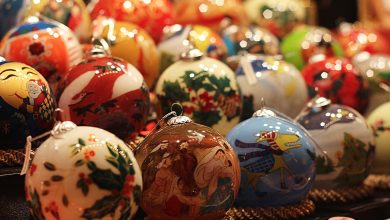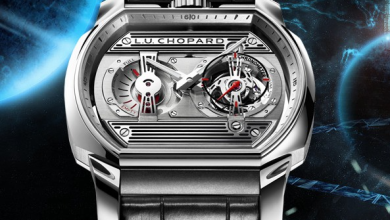
Modern networks can use twisted pair or fiber optics to directly transmit the Internet signal. These two types of cables differ from each other in the principle of data transmission, technical characteristics and price. And before you buy a cable, read the pros and cons of each option.
Twisted Pair.
A twisted pair is two insulated conductors twisted together with a certain weaving pitch. This design allows you to protect the signal from external electromagnetic interference. The signal itself is transmitted in the form of electrical impulses with a time-varying voltage. Each cable can have several such pairs. Usually the number of pairs is a multiple of two: one works to receive a signal, the other to transmit.
Often additional layers can be used in cables for physical and electromagnetic protection:
Foiled aluminum screens.
Metal braid.
Outer shell.
Copper wire 400 – 600 microns thick, covered with non-combustible polypropylene insulator, is used as a conductor for digital data transmission.
Fiber optic cables.
Optical fiber according to the principle of operation is fundamentally different from the classic twisted pair. Data is transmitted through it using short light pulses – the modes emitted by the laser and read by a special receiver.
As a conductor, a core is used, called the core, which is made from a translucent flexible material:
Quartz glass.
Chalcogenide glass.
Acrylic resin.
The core has a diameter of 7 to 62.5 µm and is surrounded by a two-layer shell consisting of an internal optically impenetrable damper and an external protective layer.
Optical fibers can transmit only one light signal (single-mode or SM), or several at once (multi-mode or MM). The latter are intended for relatively short distances.
The outer layer of insulation may combine a bundle of several light-guiding fibers with a central strength element. This configuration is called a fiber optic cable. A network organized using such cables is called FOCL or fiber-optic communication line.
What to choose for networking?
You can make the right choice only based on the technical characteristics of each of the conductors. There are only five basic ones:
1. Signal transmission speed.
In a fiber optic cable, light pulses are responsible for transmitting a signal, propagating at a speed equal to 60% of the speed of light. While in a copper wire, the signal is transmitted using an electrical impulse, the speed of which is more than 100 times lower than the speed of photons.
In the usual units of measurement, the speed indicators look like this:
Twisted pair – depending on the cable category up to 10 Gb / s.
Optical fiber – from 1 to 100 Tbps for cables of various categories.
2. Distance.
When transmitting a signal over long distances, twisted pair is also significantly inferior to optical fiber. This is due to the physical processes of attenuation of the amplitude of the electric pulse in the copper wire. Therefore, the maximum length of a twisted-pair cable without a break is 100–120 meters at a speed of 1 Gbps. Optical fiber in this regard can demonstrate up to 19 km at a speed of 1 Tbps without repeaters while maintaining signal quality.
3. Susceptibility to external interference.
Thanks to the photonic mechanism of information transmission, fiber optic lines are not affected by electromagnetic fields. This means that power lines located in the same trunk will not affect the quality of the signal. This greatly simplifies installation work. Also, the signal will not be affected by natural fluctuations of electromagnetic fields during a thunderstorm. See the best Mini PC at Apcsilmic.
Unlike fiber optics, copper cables are extremely susceptible to electromagnetic interference, so it is recommended to use expensive categories of cables with maximum protection against interference for laying networks. The second way is to place the network backbone away from other communications and sources of electromagnetic radiation.
4. Features of cable laying.
According to this criterion, the championship belongs to the copper twisted pair. In apartments and offices, it is easier to ensure that the copper LAN cable is laid in cable boxes or even channels in the baseboard. At the same time, the wire can be freely bent at an angle of 90 ° or more, it is only necessary to maintain a bending radius of at least 2.5 cm. Any user can handle this work, as well as replacing the patch cord . The main condition is the presence of RJ-45 connectors, which is often present on user equipment.
But for fiber optic lines, the minimum allowable bending radius is 7.5 cm, while pressure on the cable itself is contraindicated. This can lead to damage to the thin and fragile core and, accordingly, to the failure of the cable. In addition, when laying the network, special equipment and professional training of the master are required. Special network adapters may be required to connect fiber optic cables to user equipment.
5. Price.
A few years ago, the cost of fiber optic cable was 10 times higher than the price of a copper counterpart. But today the cost of optics and copper, as carriers, has already caught up. At the same time, there is no longer a financial difference between SM and MM fiber optic cables.
If we talk about the life cycle, then for an optical fiber it is 30 – 50 years. Twisted pair cables are also available with a service life of up to 25 years. Therefore, from an economic point of view, the difference between these options cannot be justified.
However, the situation is exacerbated by high prices for fiber optic network equipment, for example, the same transceivers .
Based on the foregoing, we conclude:
Optical fiber is indispensable for signal transmission at high speeds and over long distances. But their use in apartments and small offices is associated with unnecessary expenses and is often irrational.
However, twisted-pair copper is ideal for organizing a home network due to its flexibility, ease of installation and moderate cost. However, it is not suitable for transmitting high-speed signals over long distances.
Watch a short video from OFS, a leading world-class optical fiber manufacturer, as they take you on a tour of their manufacturing facilities.




